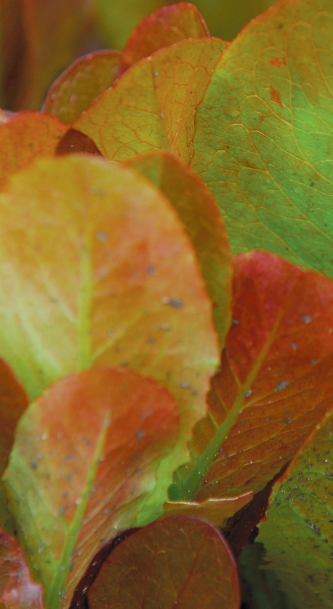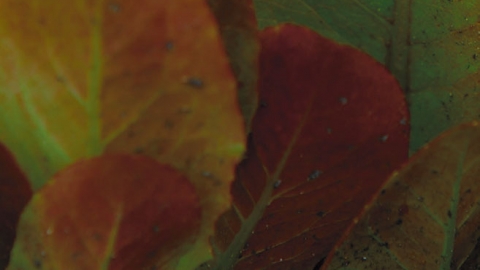Gardening on Stilts with Tongs
Since garden reality is not as static as the public library or a fast-food restaurant, the gardening writer runs a great risk in predicting what the target gardener readership will read when the deadline is well before publication. The weather will vastly govern what is possible in your garden, and in the vaunted year of El Niño Maximo, the writer may best play it safe by suggesting you get some watercress growing.
Greenhouse growers have made that prospect a lot easier because you can buy the rooted watercress plants at retail in a plastic clamshell and, after eating the tops, plant the remainder in well-drained soil for another cutting or two once your garden goes full quagmire.
Watercress seeds are terribly tiny, so to assure they sprout I have always given my seeds to a professional certified organic nurseryman to get them started for me. The bunched watercress you bought at the grocery will also root in a jar if you are diligently lucky.
Harvesting anything covered with half-a-foot of water can be performed perhaps when one is balanced on stilts high above the pond that used to be your backyard. Long-handled tongs may be required to reach your cilantro. Am I being too optimistic about 40 more inches of water falling on Ventura County? Forty may not be enough to brim Lake Casitas, Piru and the vast underground aquifers fed by our many streams and the Ventura and Santa Clara rivers. Build your stilts now to show you have faith.
In gardening you must always have one foot in the future and another in the past, straddling the present with information and the will to achieve your goal of vegetable self-sufficiency.
However, since you are reading this in the brighter light of spring, let’s pretend you’re already thinking about planting out a summer garden, which would easily accommodate chard as well as tomatoes and peppers, lettuce and cucumbers, onion plants and eggplant.
The organic transplant trade has started, not everywhere, or every season, but a number of larger growers have dedicated growing space to non-synthetic production. Be sure to confirm that the plants you buy are organic.
Growing your own transplants is usually best, but some, like peppers and tomatoes, can be challenging. Try anyway. If you purchase vegetable transplants elsewhere, you will probably be safe from chemical residues on tomatoes, peppers and other long-term fruiting plants because the chemicals will volatize over time.
But conventional beet, lettuce or spinach transplants are a bit more of a risk. Plant diseases like mildew and bacteria are a common issue in greenhouse production, not insects. Disease control materials are routinely applied in the greenhouse even in the absence of disease because such sprays are preventative. I spray the naturally occurring fungicide Neem (Azadirachta indica) right after the garden spirits who live on my farm have alerted me to the imminent danger to my crops.
If I fail to listen, I will see long stands of lettuce in a few days covered in mildew. You can get Neem at nurseries that sell organics. You don’t need a $39.95 pump sprayer normally, just a reusable spray bottle you can buy for $3.79.
In order to start a garden, you will need to start a garden. This is not the rocket science of yore. You must make a list of all the things you like to eat and then go outside and turn a few square feet of dirt over with a shovel, throw on a few handfuls of organic fertilizer from the box you bought at the nursery and chop it in with mad abandon. Now spread the seeds on there, one mound per each vegetable variety, and cover them with three- to five-sixteenths of an inch of soil, or exactly the level layer that is equal to the diameter of the seed.
Fling 28 lettuce seeds on a two- by two-foot zone and begin sampling in four weeks. Corn and beans go big; arugula you just dust with the flick of your sandal. Start eating all the leafy vegetables as soon as it occurs to you that if you wait they will get too crowded. Re-fling when inspired. You only want one mature plant every four to six inches if you have planted spinach or lettuce, but you can clip the small ones out with a scissor every few days, which will be a very good health practice to follow, both practically and ethereally. Gardening is older than yoga.
If your plan is for zucchini, plant three or four seeds per location. As the plants grow, thin them so you’re left with two. Each plant will cover 10 square feet eventually, so make an eff ort not to crowd your radishes. Speaking of crowding radishes, when growing shoulder-to-shoulder you need to eat every other radish every other day in a 10- to 15-day period. On the 16th day of maturity, the radish will be pithy and hollow, so you will be glad you planted more radishes in 16-day intervals.
For unlimited supplies of carrots or beets, interval at six weeks. They take 65 days to grow when planted on March 1, and 115 days to grow if planted on November 1 due to declining day-length and c-c-coolness.
You can certainly plan on an elaborate, super-conscientious watering system while you are dragging your hose around watering everything every other day without fail. You have quandaried yourself by impetuously spreading out $37 in organic seed without spending $119 on the super-conscientious, water-conserving, enviro-certified irrigation system.
But chill. Your carbon footprint is already vastly reduced because you can walk to your produce department in the backyard instead of driving there. You need to prove to yourself that you are the organic vegetable gardener you always dreamed you’d be before you invest in the tangle of tubing and auto-timers the world expects you to shell out for.
Steve Sprinkel is a regular contributor to Edible Ojai & Ventura County. A longtime commercial organic farmer, he co-owns Farmer and the Cook with his wife, Olivia Chase, in Meiners Oaks.







